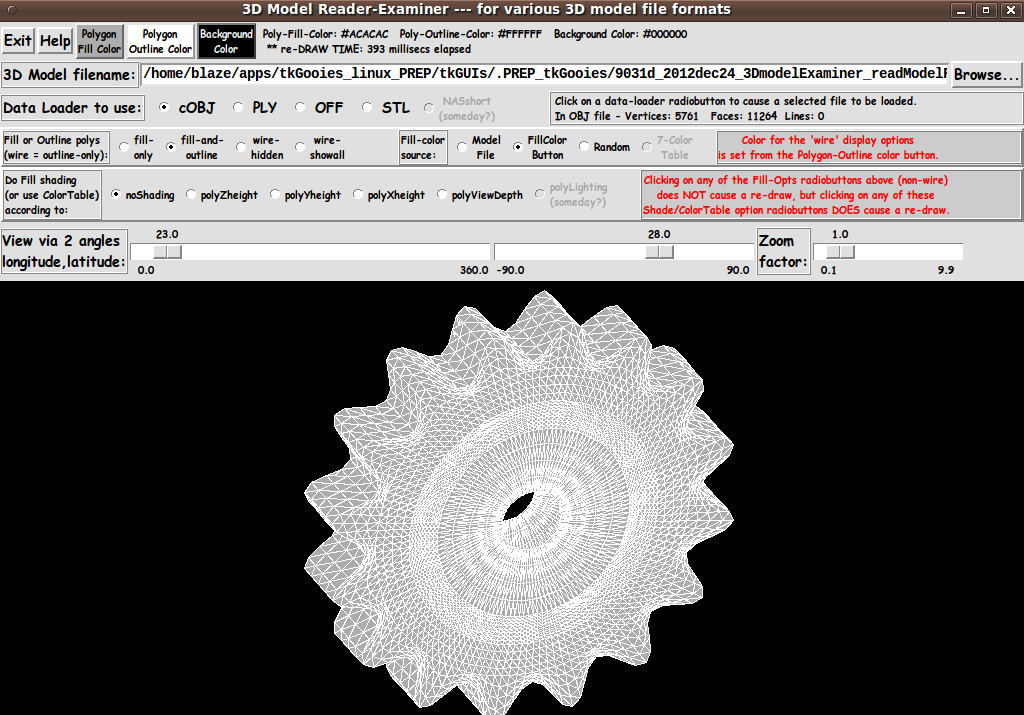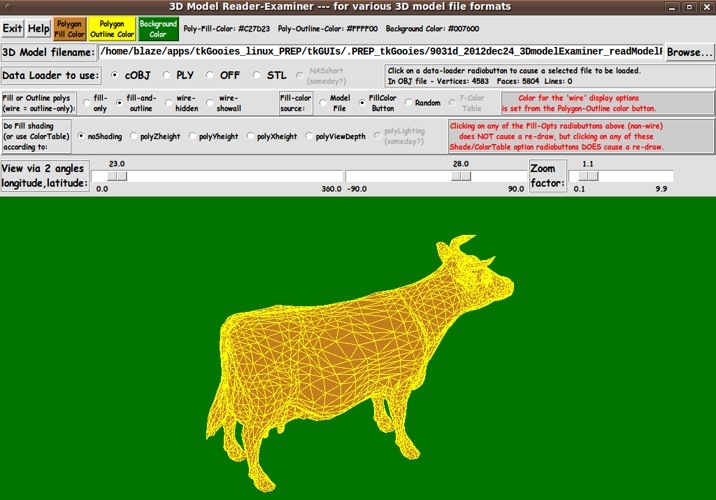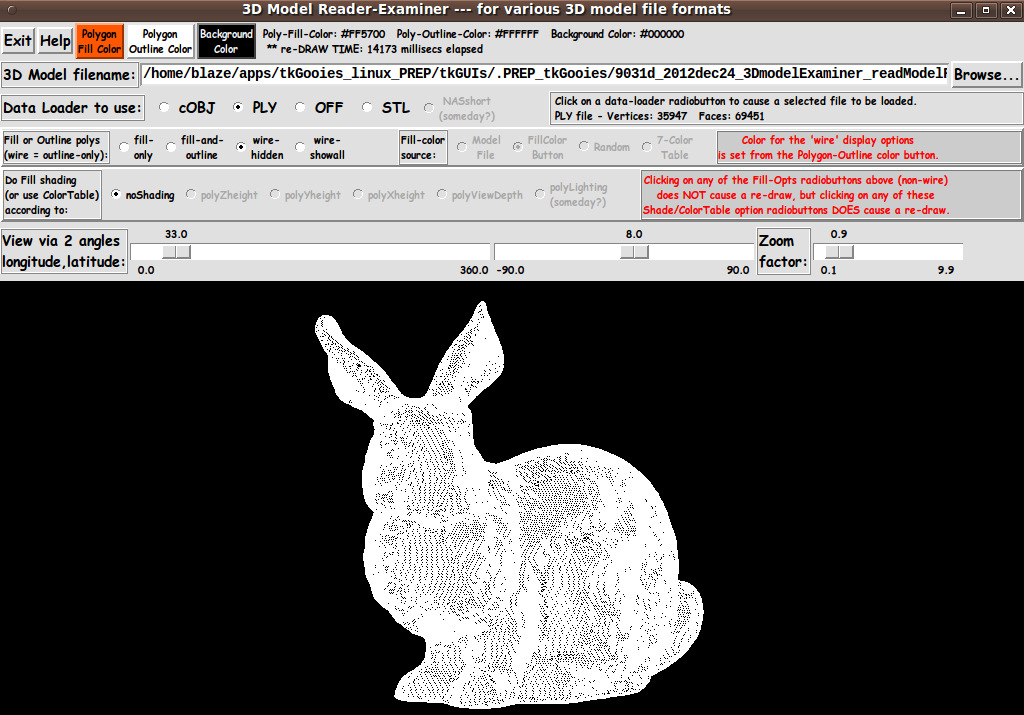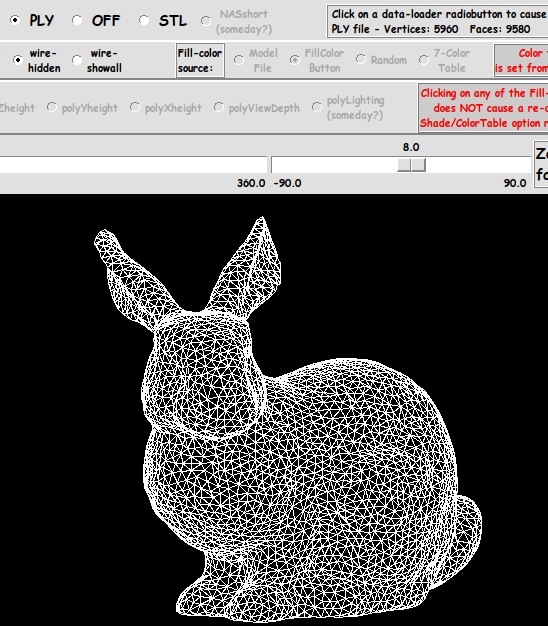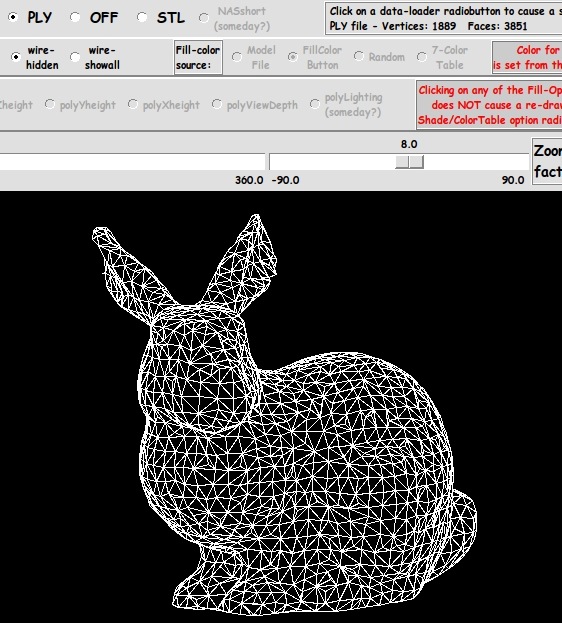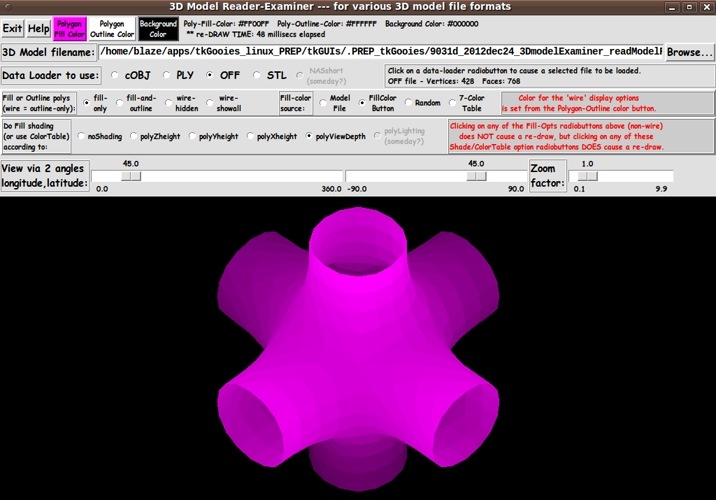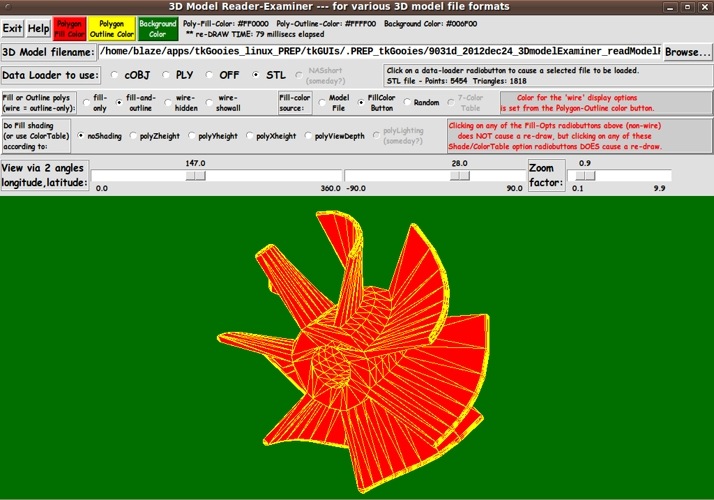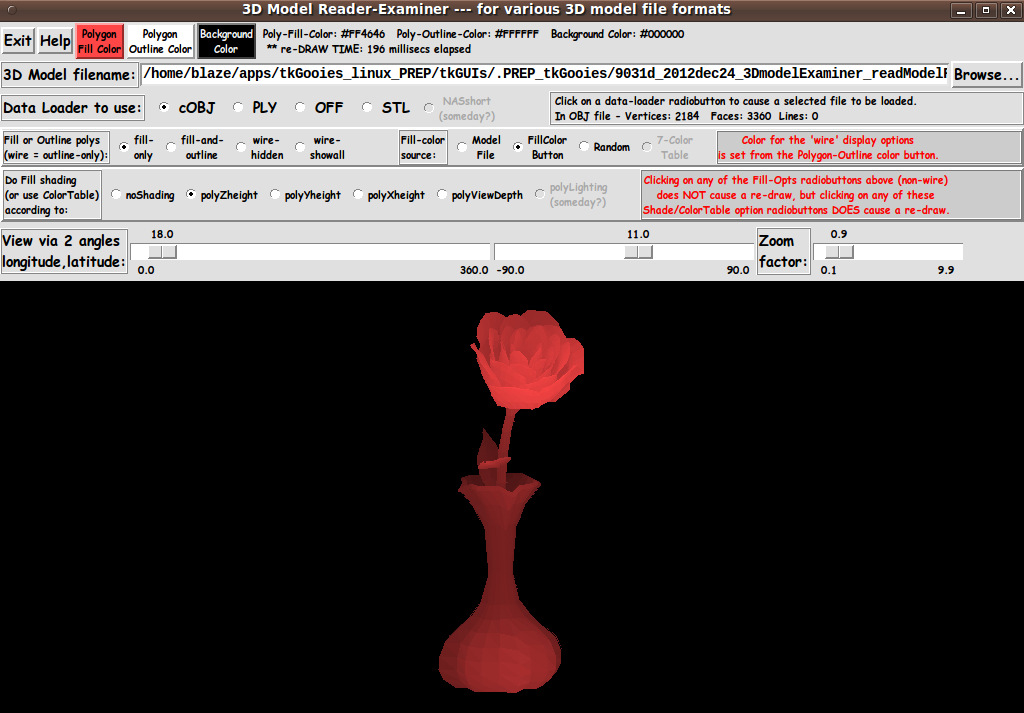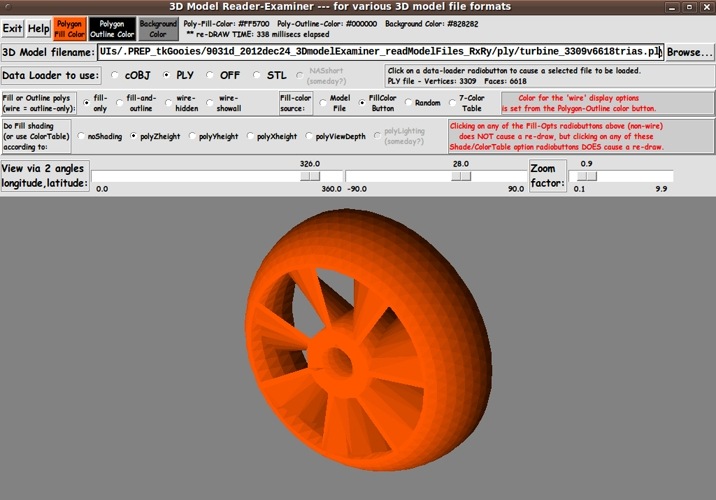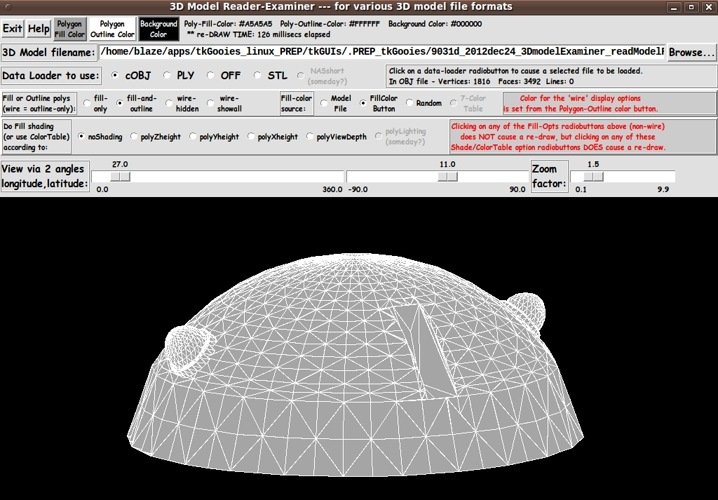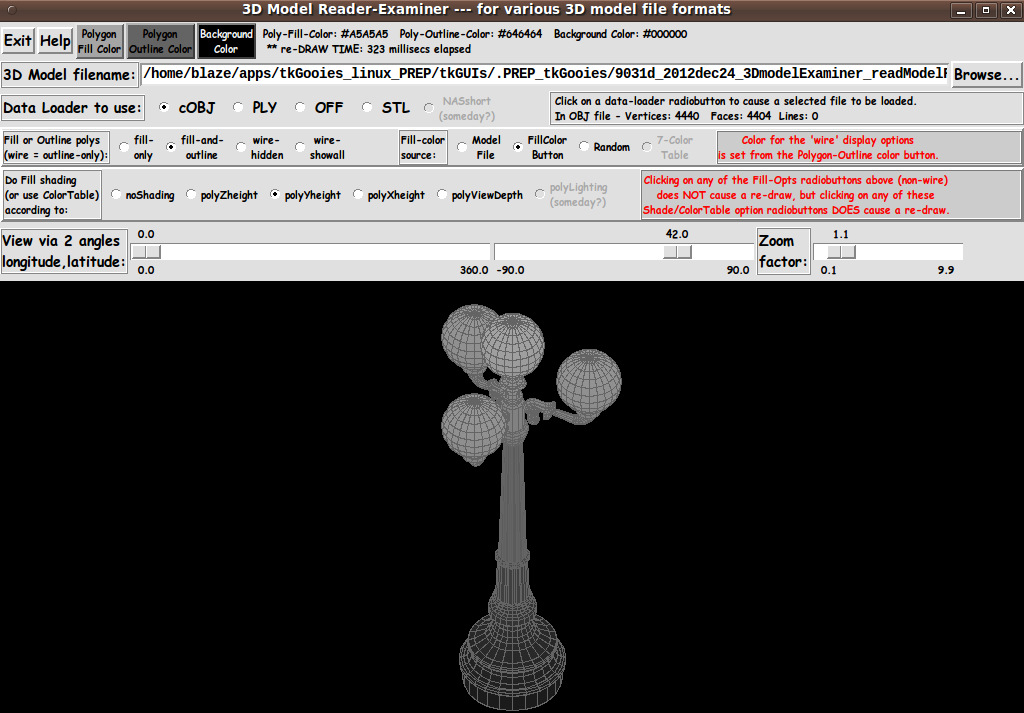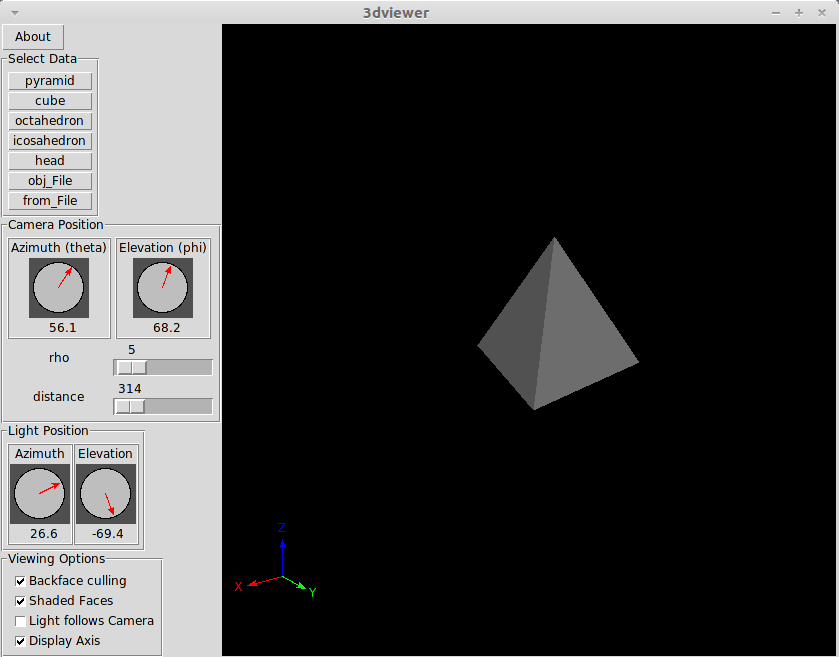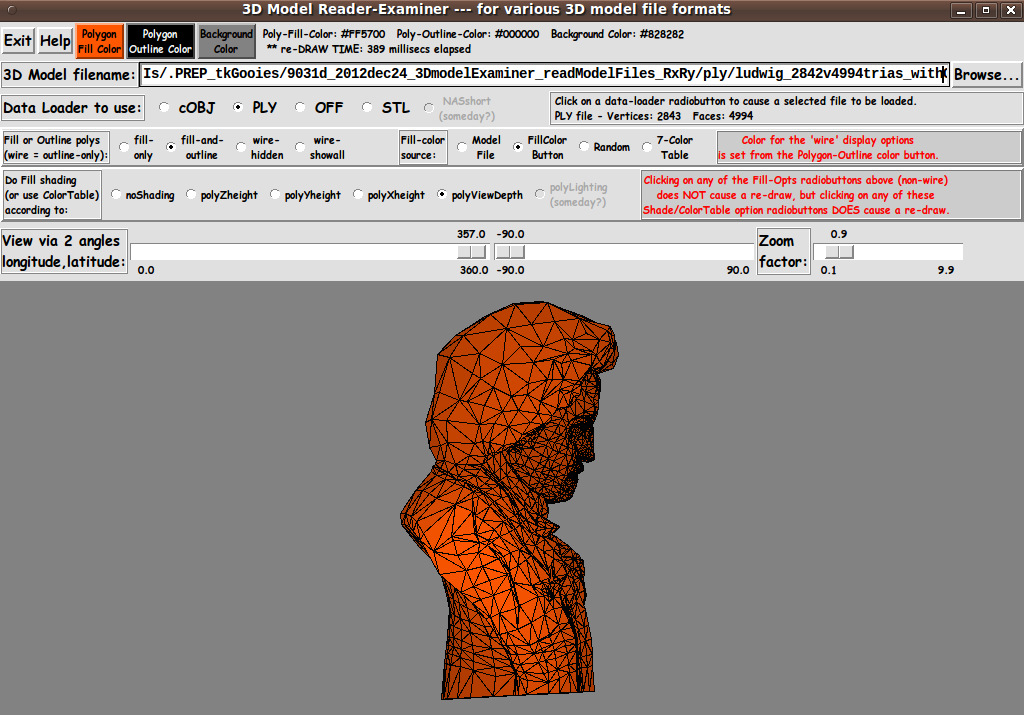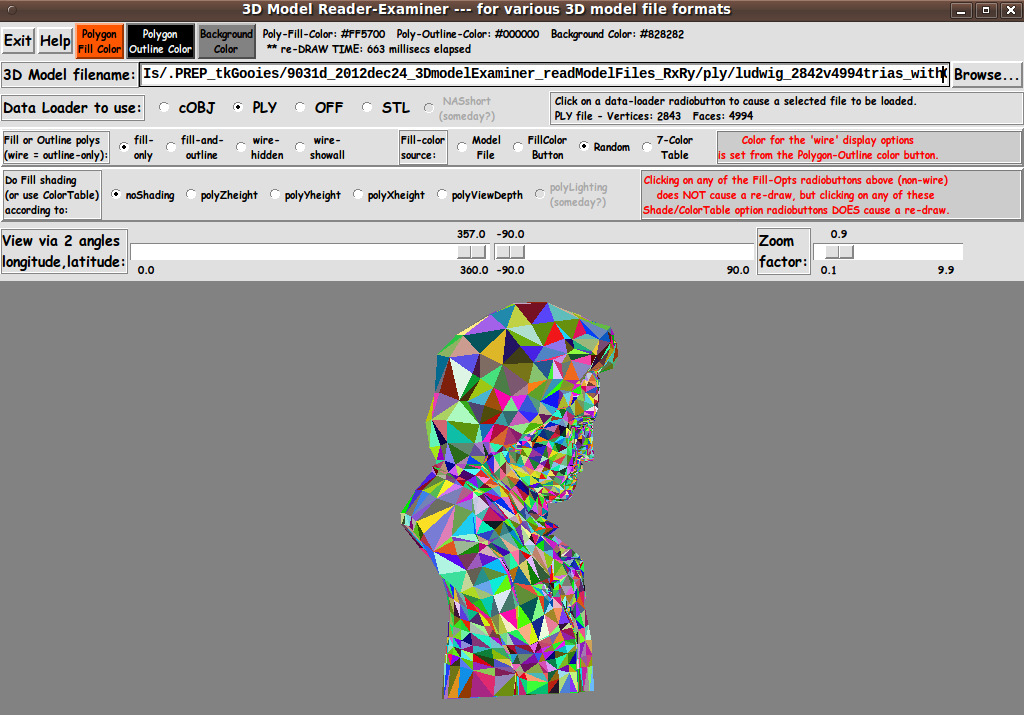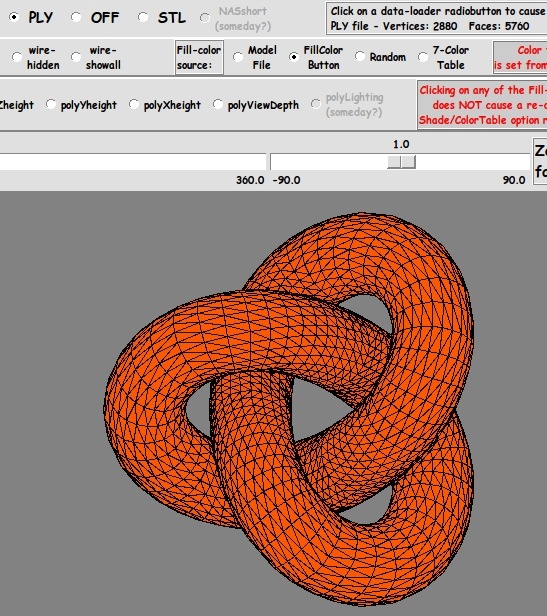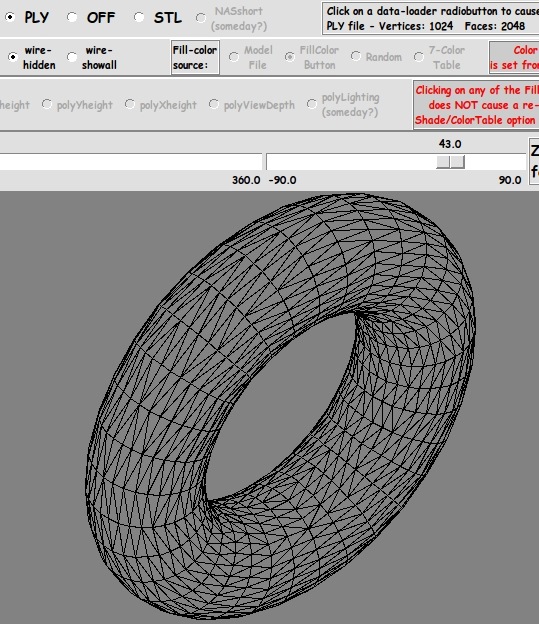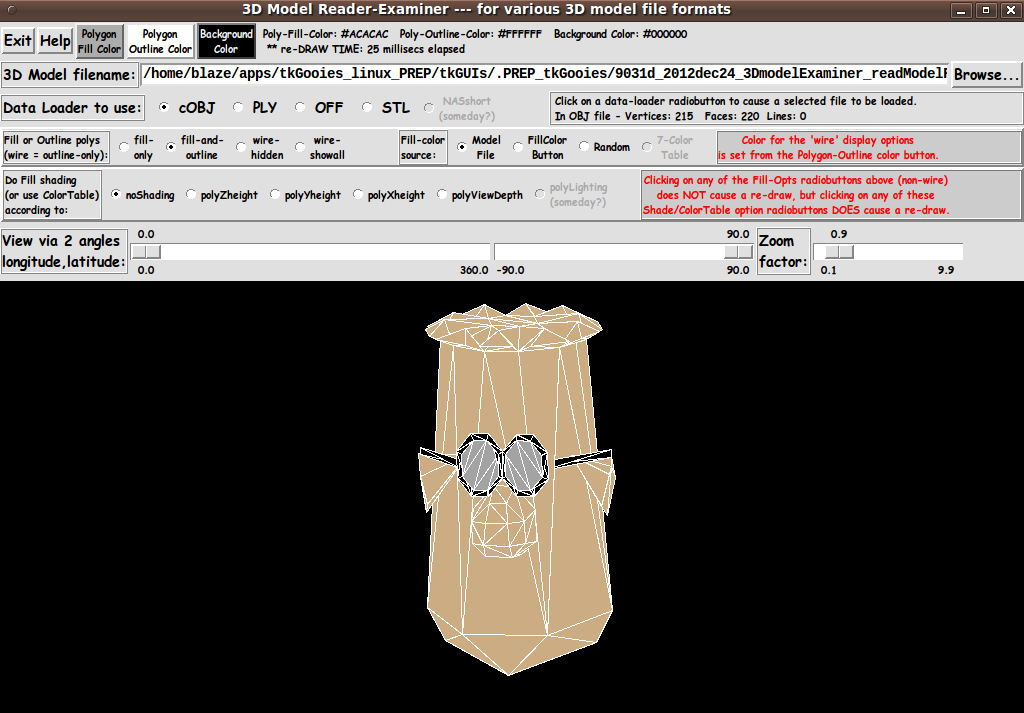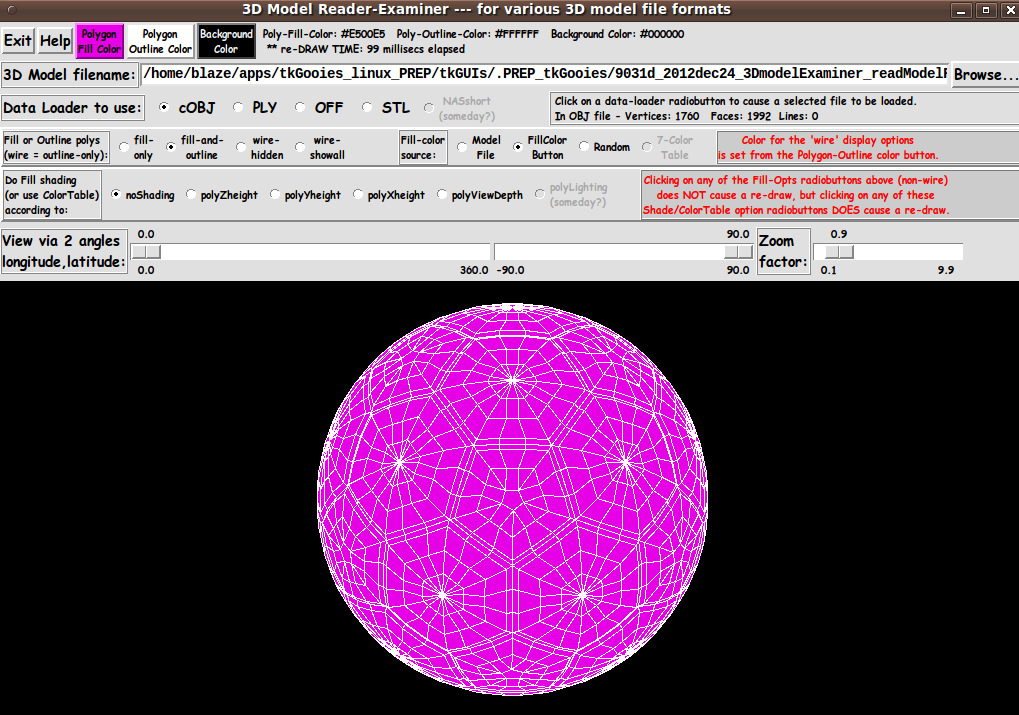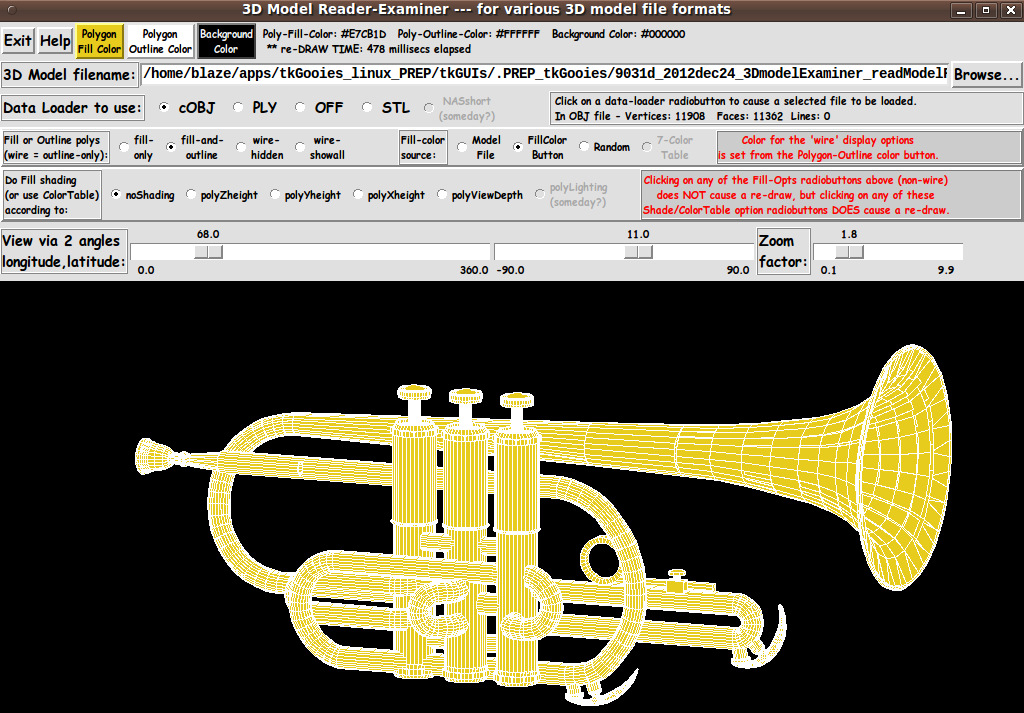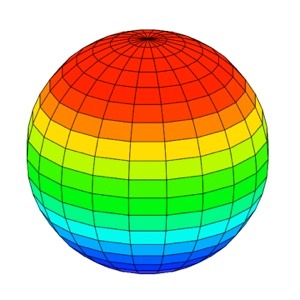|
INTRODUCTION to a
3D Model Examiner that reads 3D model files
On a web page (of this FE site) that provides code for a
'3D Examiner for functions of 2 variables', I pointed out that I found
a couple of 3D model viewing Tcl-Tk scripts quite inspiring --- two
scripts of 'MBS' (Mark Stucky) and 'GS' (Gerard Soohaket) that they
provided at
wiki.tcl.tk ---
under the titles
I stated my plan to devise a similar 3D viewer --- but with
enhanced 3D model import options and some other enhancements.
My plan was to support reading and examining models from ASCII file
formats such as
- Wavefront OBJ
- Stereolithography STL
- Cyberware PLY
- Geomview OFF, and
- eventually, at least one CAE(FEA) file format.
Thus, an unlimited number of 3D models could be viewed.
I took steps toward those ends by first developing two somewhat
less ambitious 3D surface viewers:
whose code is presented on this site via the 'tkGooies'
'3Dtools' page
which also presents this page.
For the first of these 3D surface viewers,
I presented code for a Tk GUI that allows for examining surfaces
generated over a rectangular grid in the x-y plane --- by generating the
z-values of points on the surface, over a rectangular grid,
from a function of x and y --- z=f(x,y).
In that script, I established a lot of procs that I could use
for other 3D viewers. In particular, I provided a proc to rotate
'3D point clouds'.
In the second of these 2 pages/scripts, I devised a proc for
polygon-sorting according to a 'z-depth'.
So those two 3D viewer projects provided a lot of the code
that I would need to make the 3D model-file viewer that was
my ultimate goal.
In both of those projects, I was plotting only 4-sided polygons
(quadrilaterals) on the Tk canvas.
Some of the new items that I would need were:
data-loader procs for ASCII 3D model files --- in particular,
for OBJ, PLY, OFF, and STL files
and
enhanced 'sort' and 'draw' procs that would
handle N-gons for N=2,3,4,5,6,7,8,9,10,... --- not just N=4.
MY GOALS:
I decided to make a 3D model file reading-and-viewing utility that
included the following features.
1) Rotation method:
I would allow the user to specify latitude and longitude angles
to specify the view direction.
I would use Tk 'scale' widgets so that setting the 2 view angles
can be done quickly and redraw is initiated immediately.
I would use button1-release bindings on the scales to
cause the redraw as soon as a scale change is complete.
I may eventually add bindings to mouse events on the canvas,
like <Motion>, so that the view rotation can be done even
more quickly and conveniently.
This would be similar to rotate/zoom/pan controls that
Mark Stucky provided in a 3D model viewer that he published at
wiki.tcl.tk/15032, under the title
'3dviewer : A canvas only viewer of 3D data'.
2) Data entry:
Instead of having one entry field for the function f(x,y) --- or
3 entry fields for functions f(u,v), g(u,v), h(u,v), for the parametric
function viewer --- I would have an entry field for a 3D model filename
--- along with a 'Browse...' button by which to navigate to and select
a file in the computer's directory structure.
'Data-loader' procs for the Wavefront OBJ, Cyberware PLY, Geomview OFF,
and Stereolithography ASCII 3D file formats would be provided.
Thus we have the ability to choose from an unlimited variety of 3D models.
3) Color choices:
Like in the f(x,y) viewer and the f(u,v),g(u,v),h(u,v) viewer,
I would allow color choices for
- polygon fill
- polygon outline
- canvas background
from among 16 million colors, each.
4) Display options:
I would provide radiobuttons by which the type of model display could be chosen:
- 'fill-only' of polygons
- 'fill-and-outline' of polygons
and two 'outline-only' options:
- 'wireframe-hidden'
- 'wireframe-show-all'.
5) Zoom option:
Like in the f(x,y) viewer and the f(u,v),g(u,v),h(u,v) viewer,
I would provide a 'zoom' Tk scale widget, by which the plot can
easily be resized, down or up --- to make sure the entire plot can be
seen on the canvas.
Like with the 2 scales for the longitude-latitude view angles, I would
use a button1-release binding on the zoom scale to cause the redraw to be
initiated as soon as a scale change is complete.
6) Math approach:
Whereas in the two surface plotting Tk scripts, I used a z-axis
in the 'up' direction, for this model-file viewer I would think
of the 'fixed, viewing' coordinate axes oriented as follows:
-
positive y-axis is 'up' (parallel to the monitor screen)
-
positive x-axis is 'to the right' (parallel to the monitor screen)
-
positive z-axis is 'out of the screen' (perpendicular to
the monitor screen).
Based on that, I would let the 'longitudinal' ('yaw') view angle
specify a rotation around the y-viewing-axis and the 'latitudinal'
('pitch') view angle specify a rotation around the x-viewing-axis.
Then rotations of the models could be given by an Rx * Ry rotation matrix
product.
(We are avoiding 'roll' --- rotation around the z axis.
It is too disorienting.
'Roll' is for fighter jet simulations and for emulating a
snowboarder doing flips off a half-pipe or a snow-park ramp.
After all ...
When we examine an object, like a (stuffed) tiger, we walk
around it and we may put our eyes somewhat above or below
its middle --- but we generally do not stand on our head
to examine it.)
As I did for the viewer of parametric surfaces given by
3 functions of u and v, I needed to implement a procedure for
sorting the polygons before drawing them.
I could take the sorting utility for that parametric surface viewer and
enhance it to handle N-gons, where N = 2,3,4,... --- not just 4-gons
(quadrilaterals).
Again, I would use the '-command' option of the Tcl 'lsort' command ---
by providing a 'compare' proc to compare 2 given polygon IDs,
according to a depth-measure.
---
In aiming to accomplish these goals, I ended up with the GUI seen in
the following image.
|

